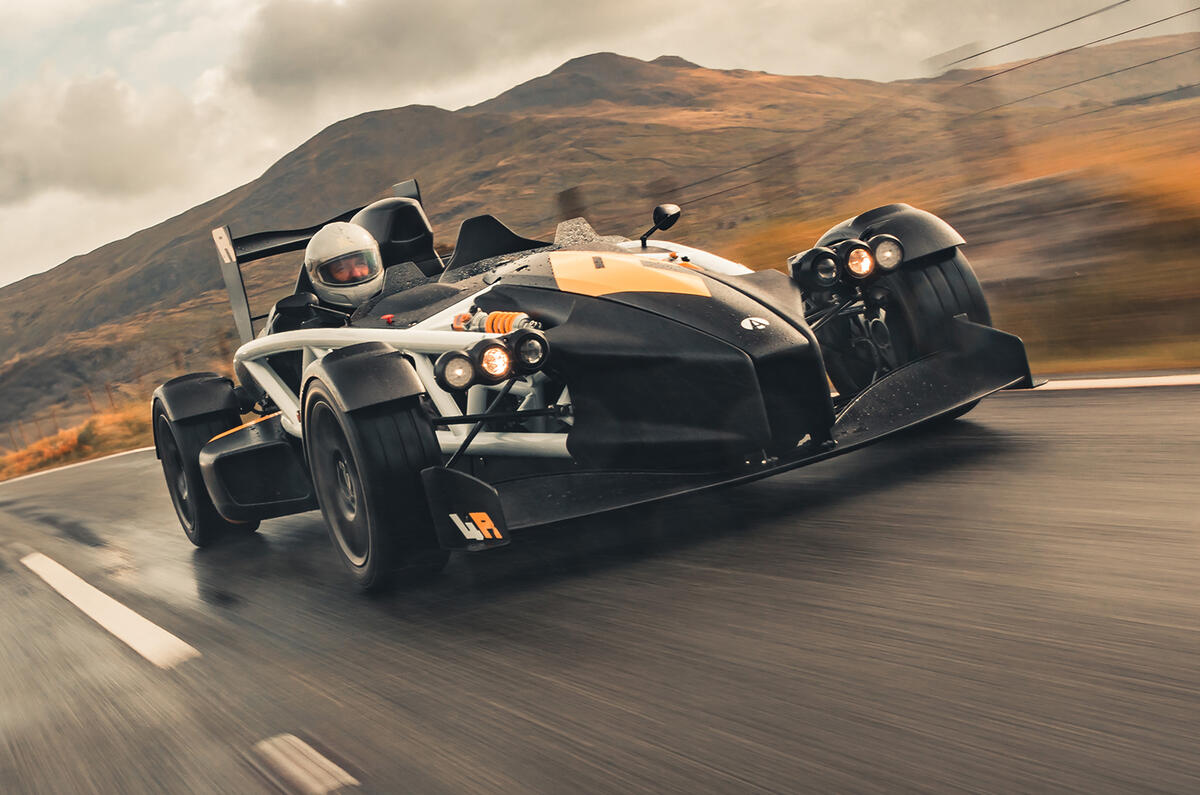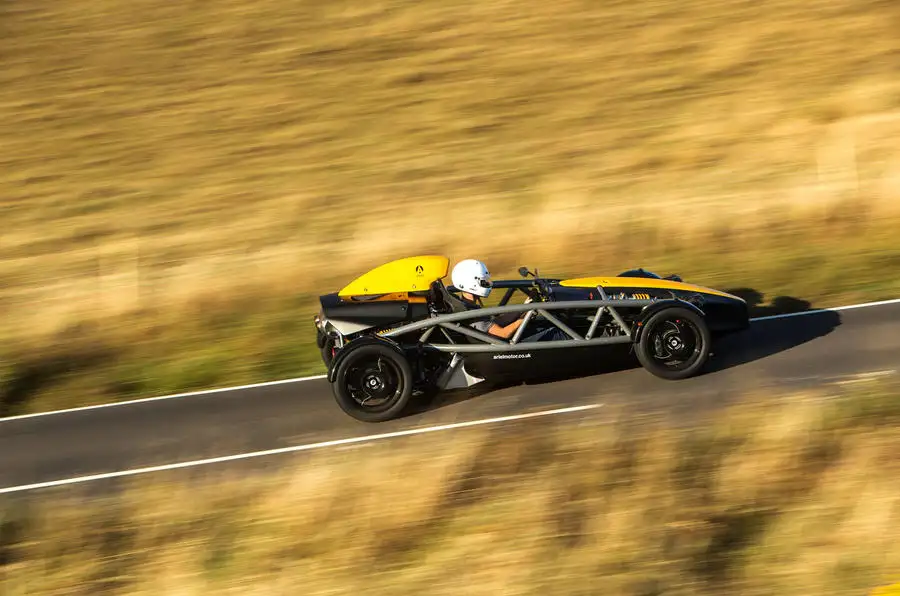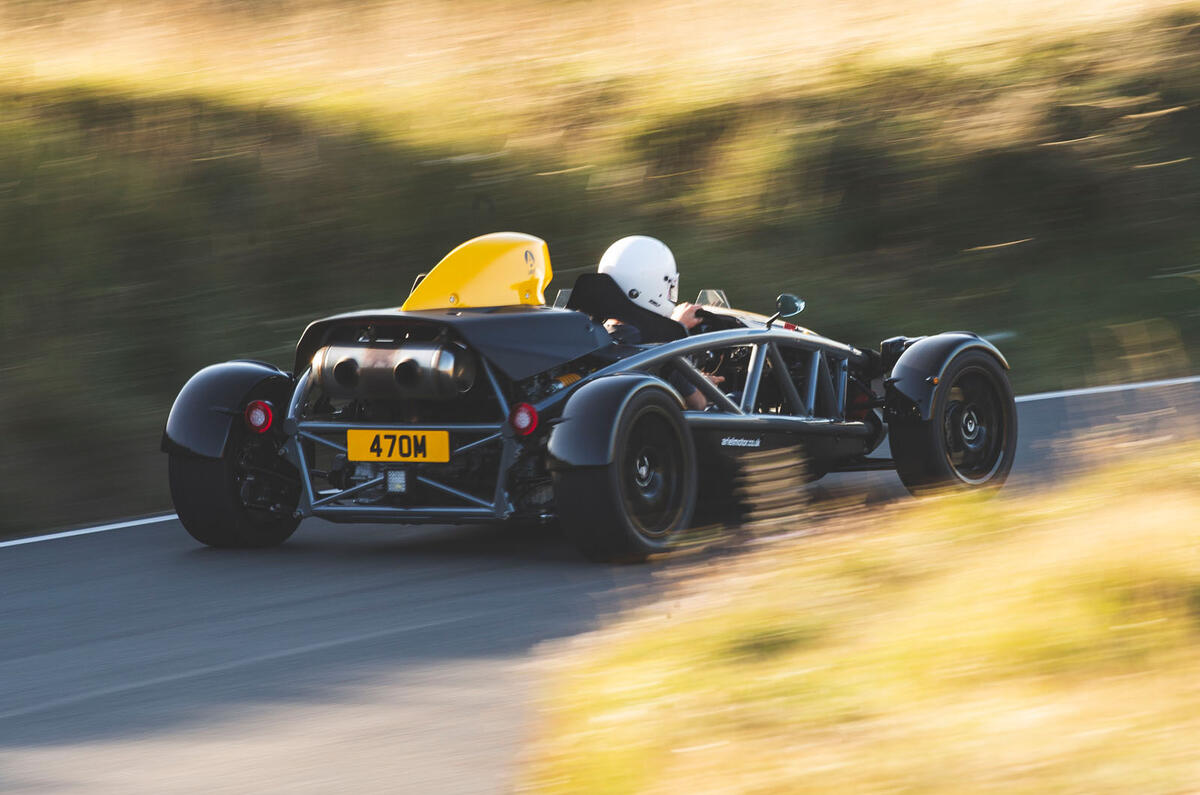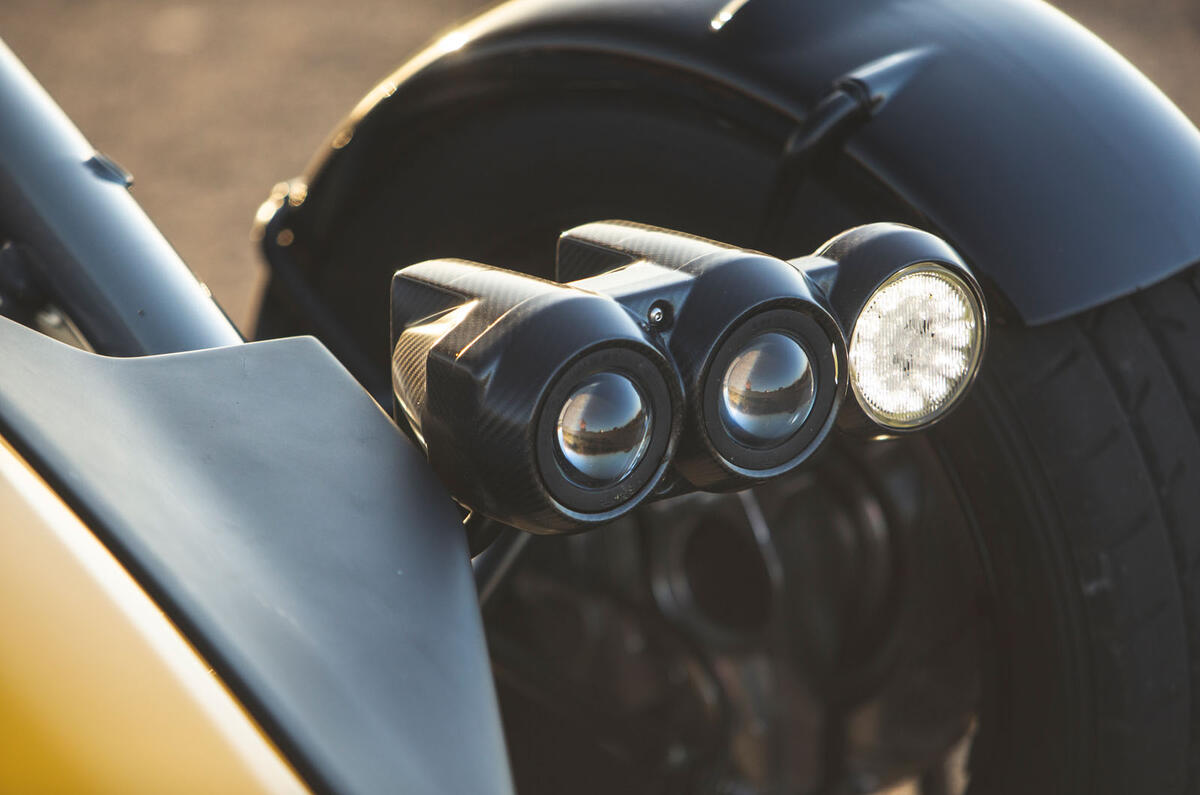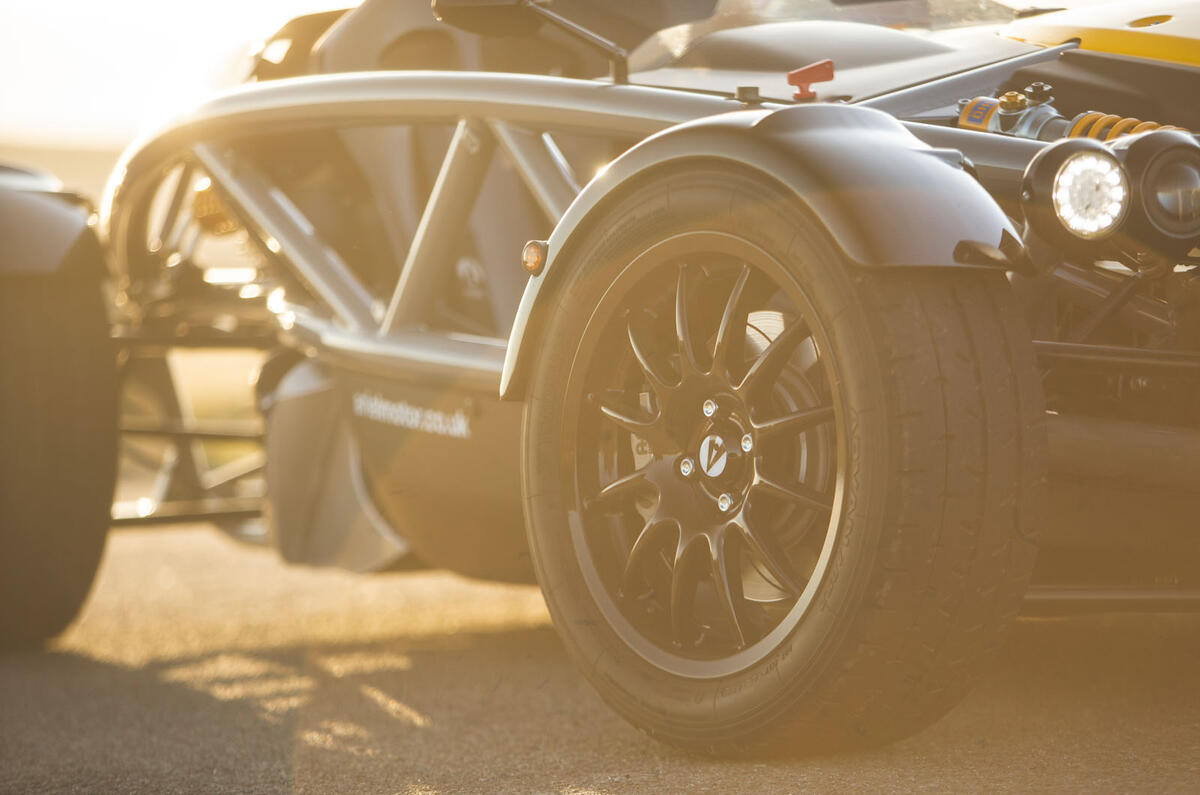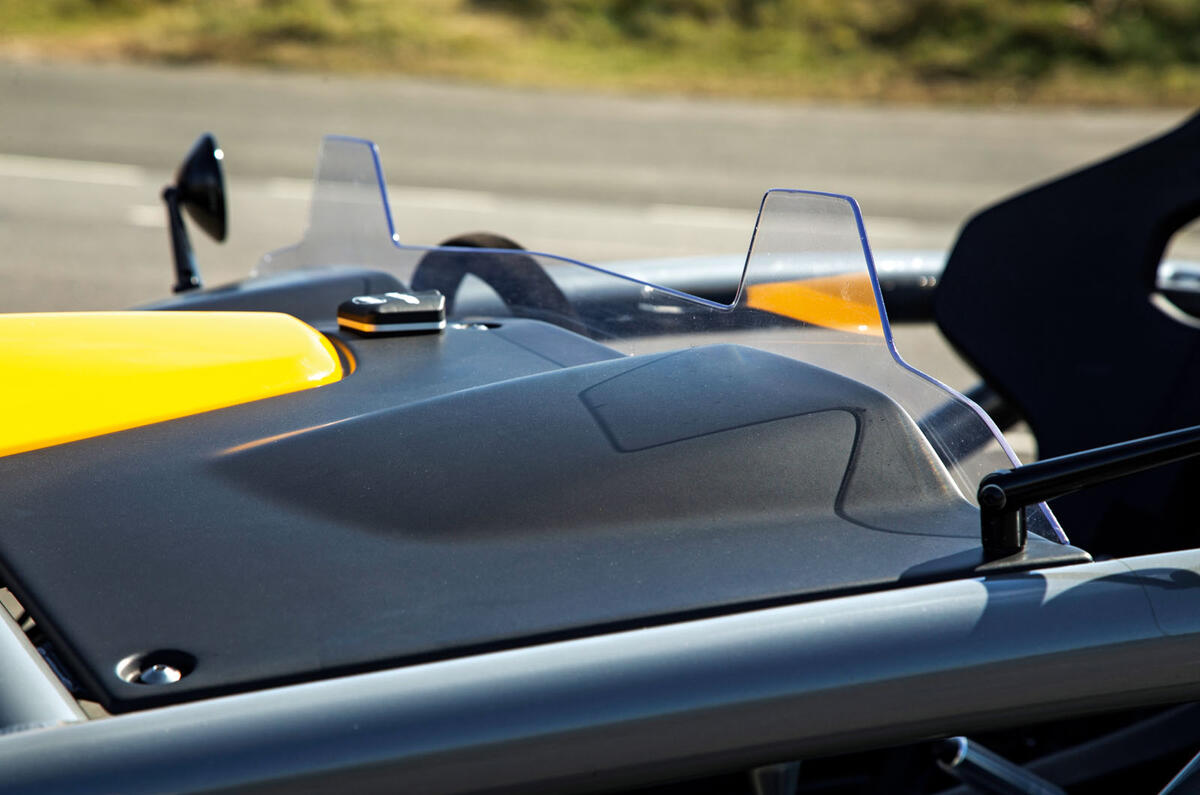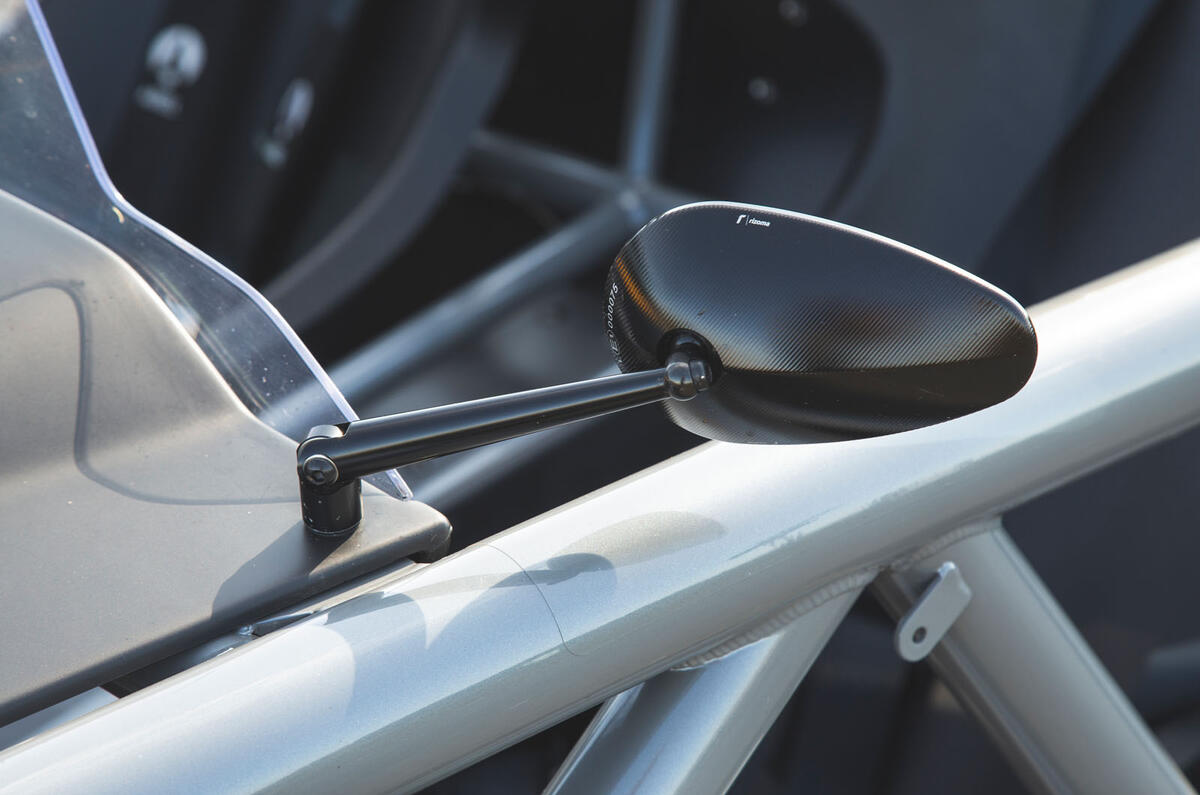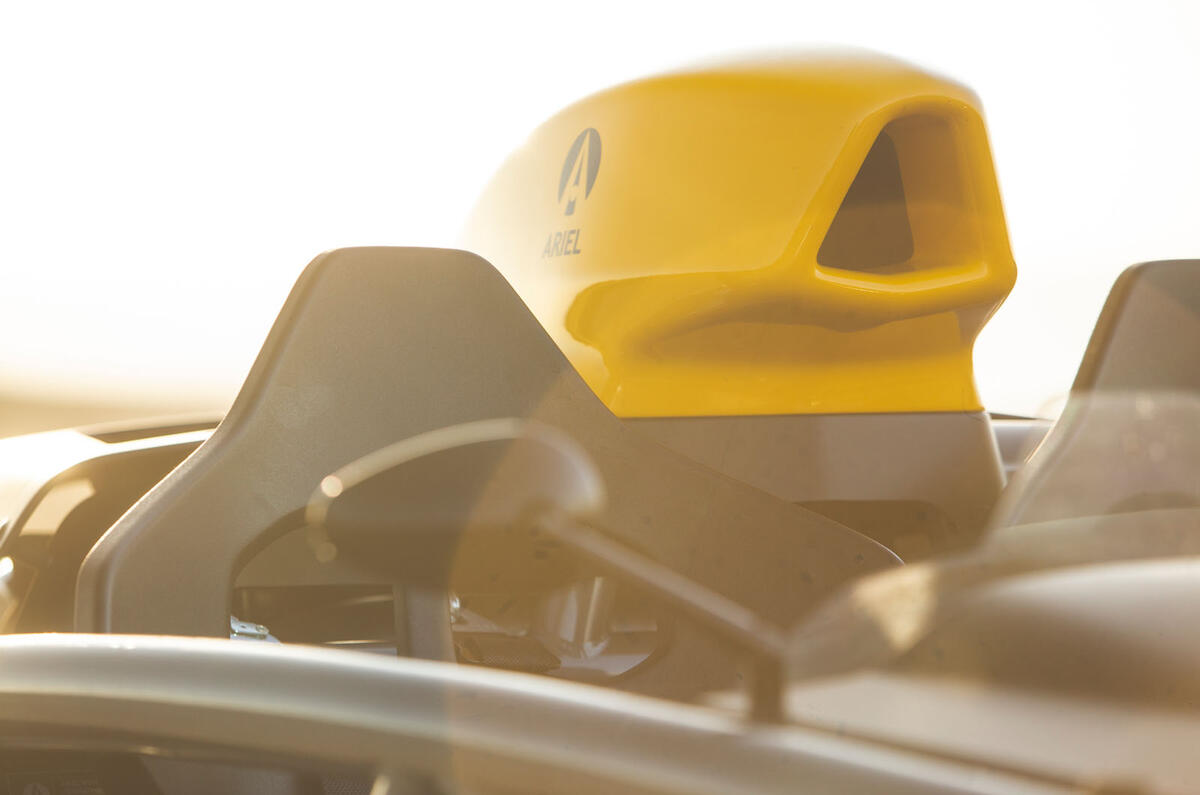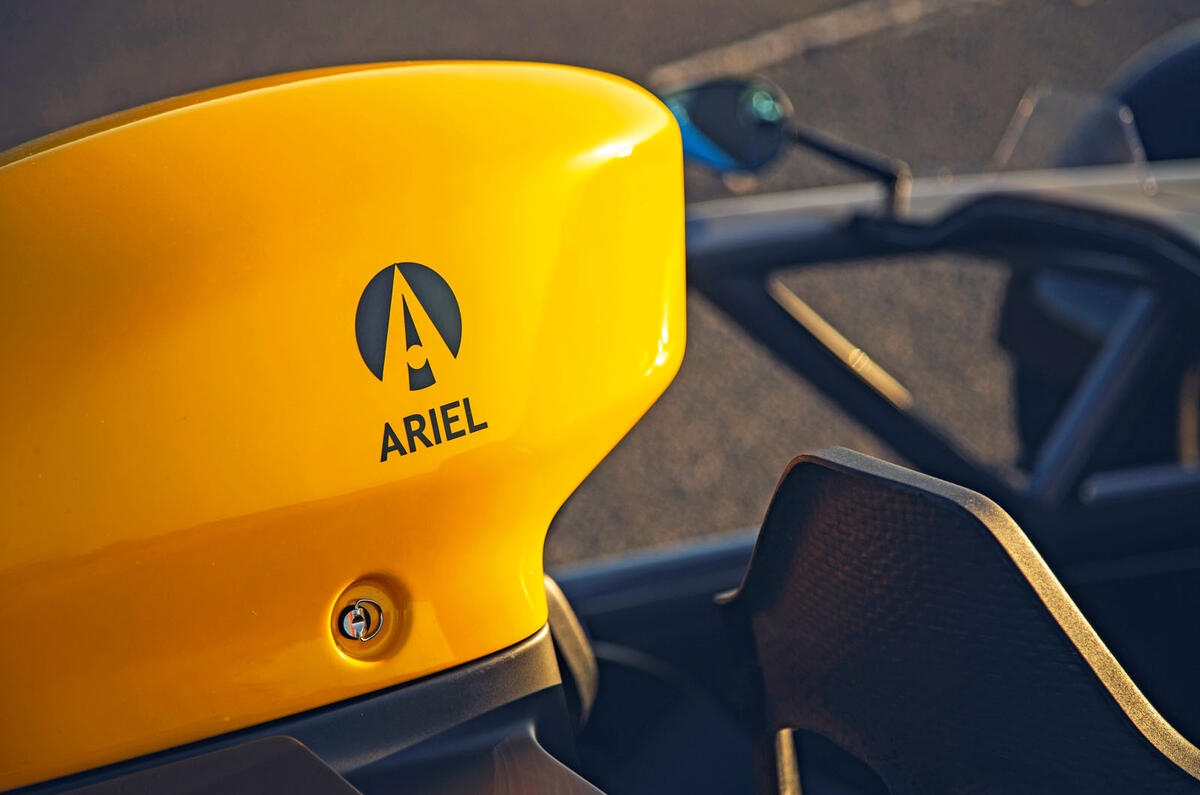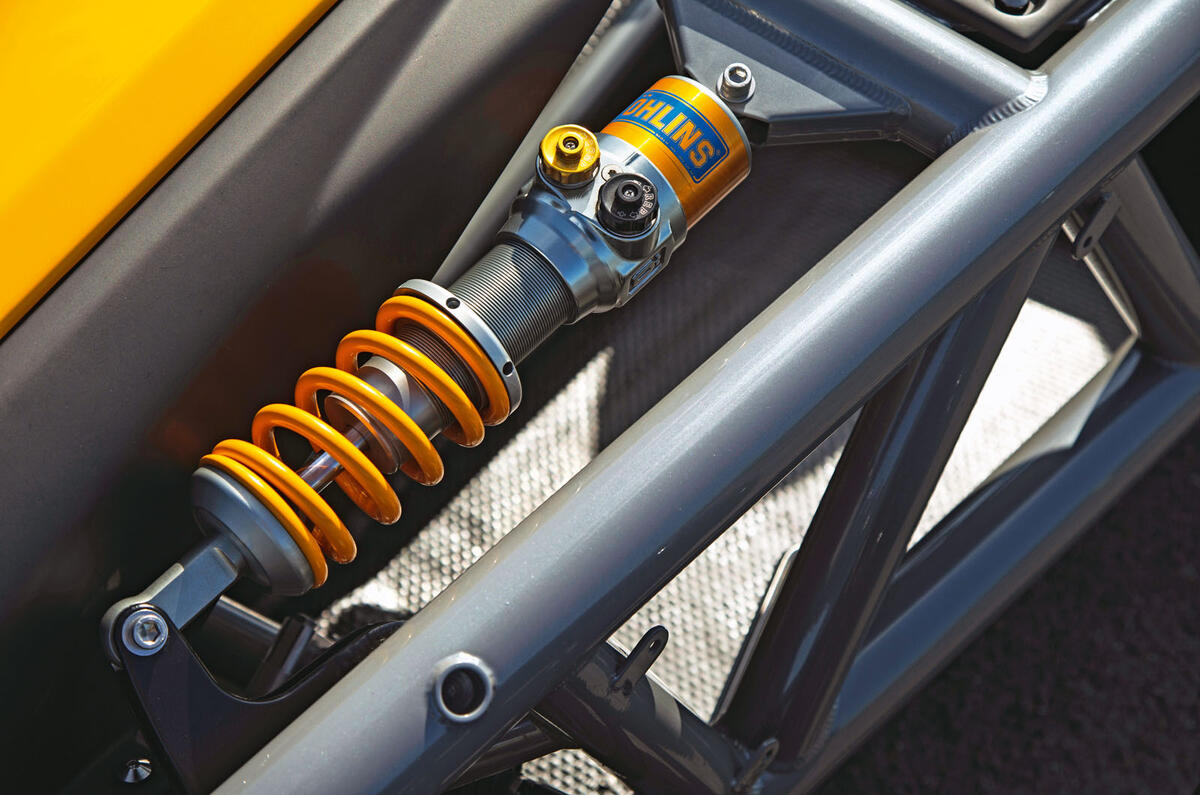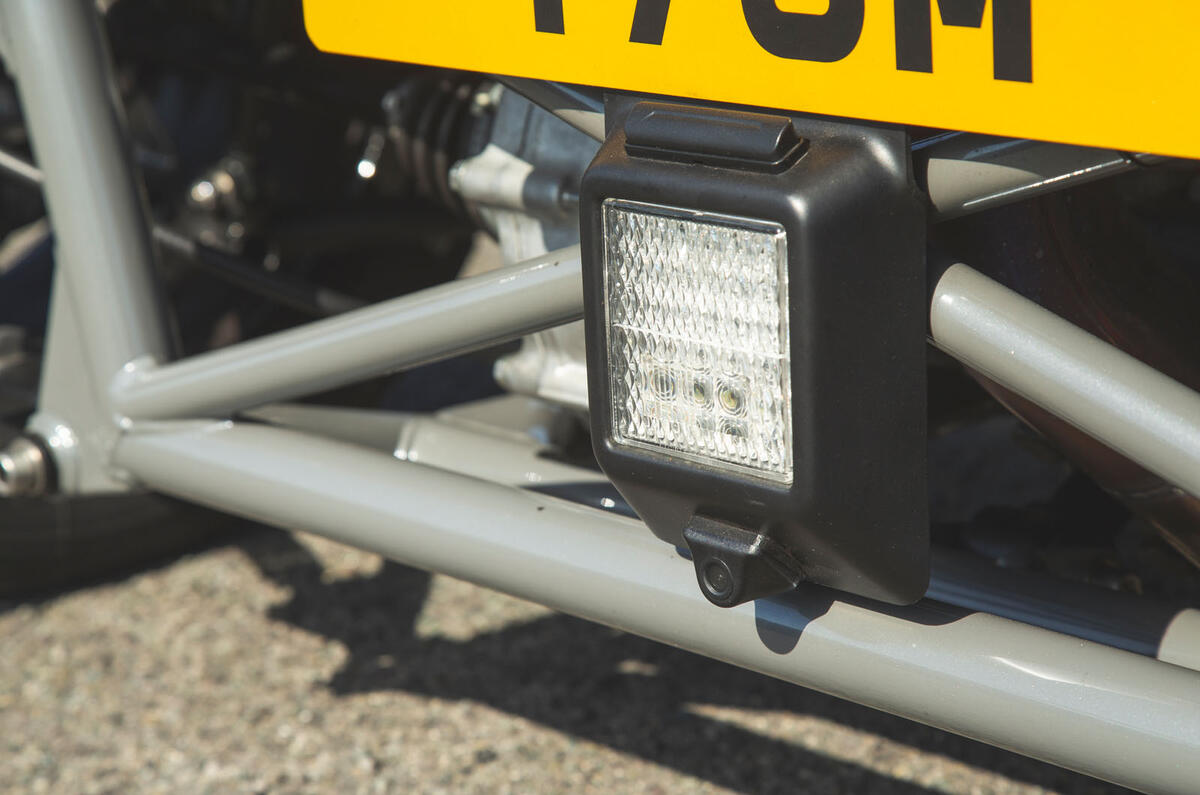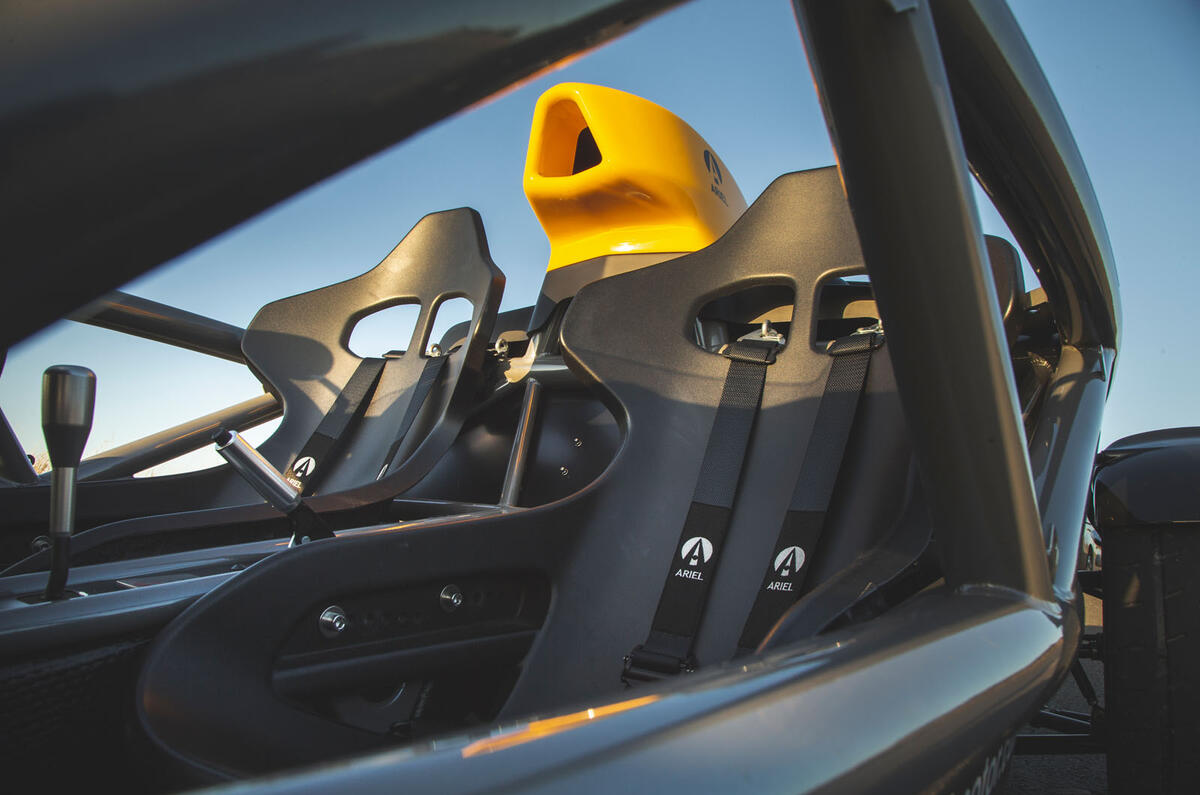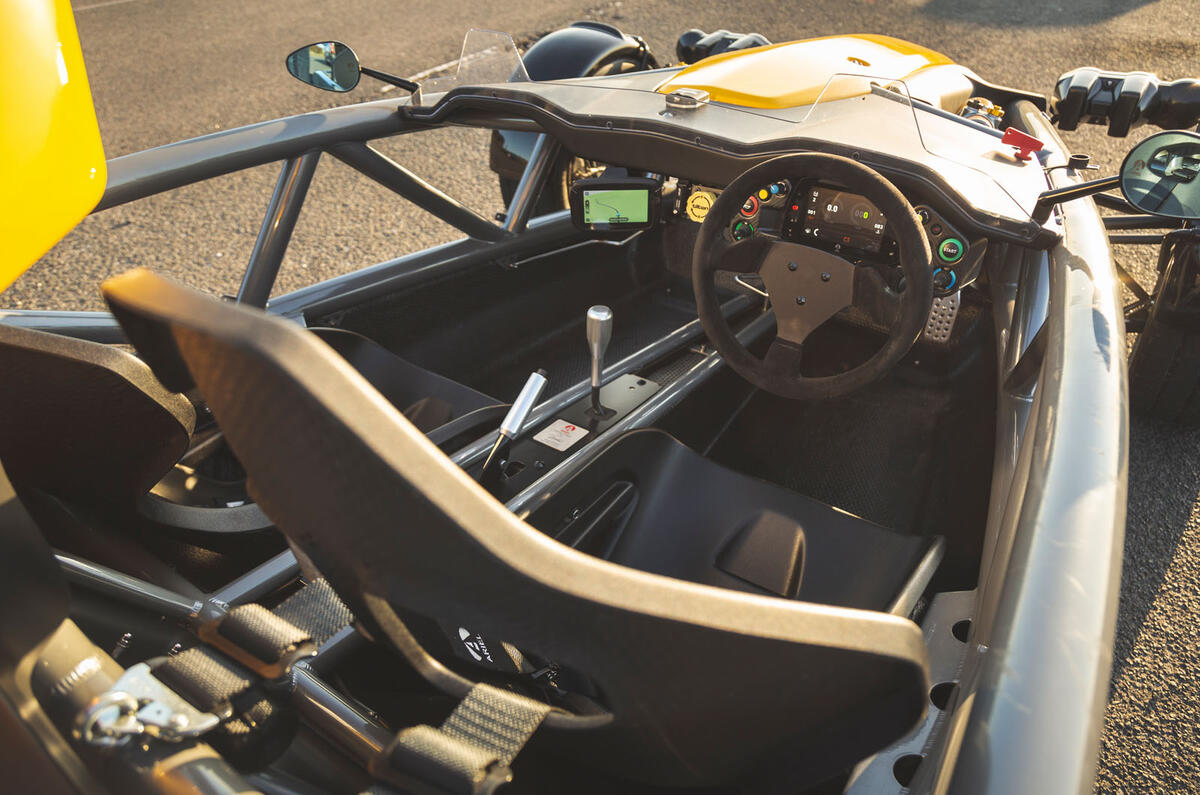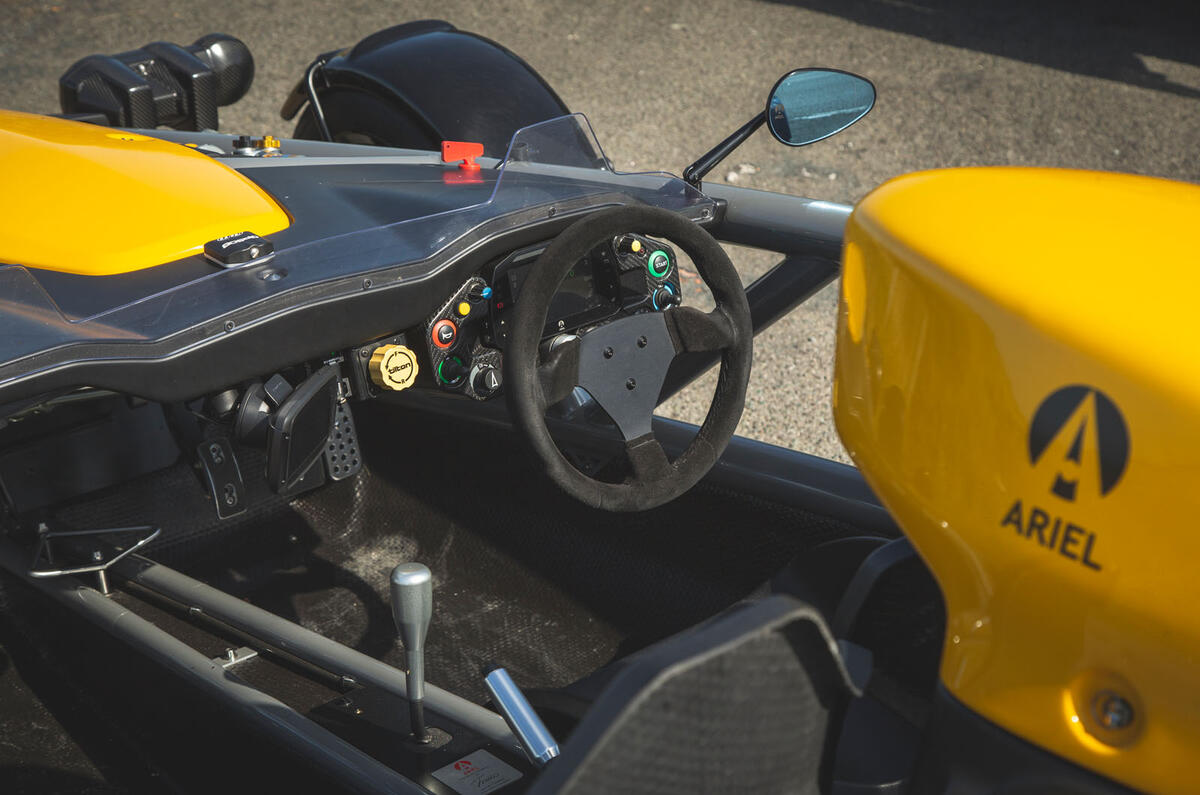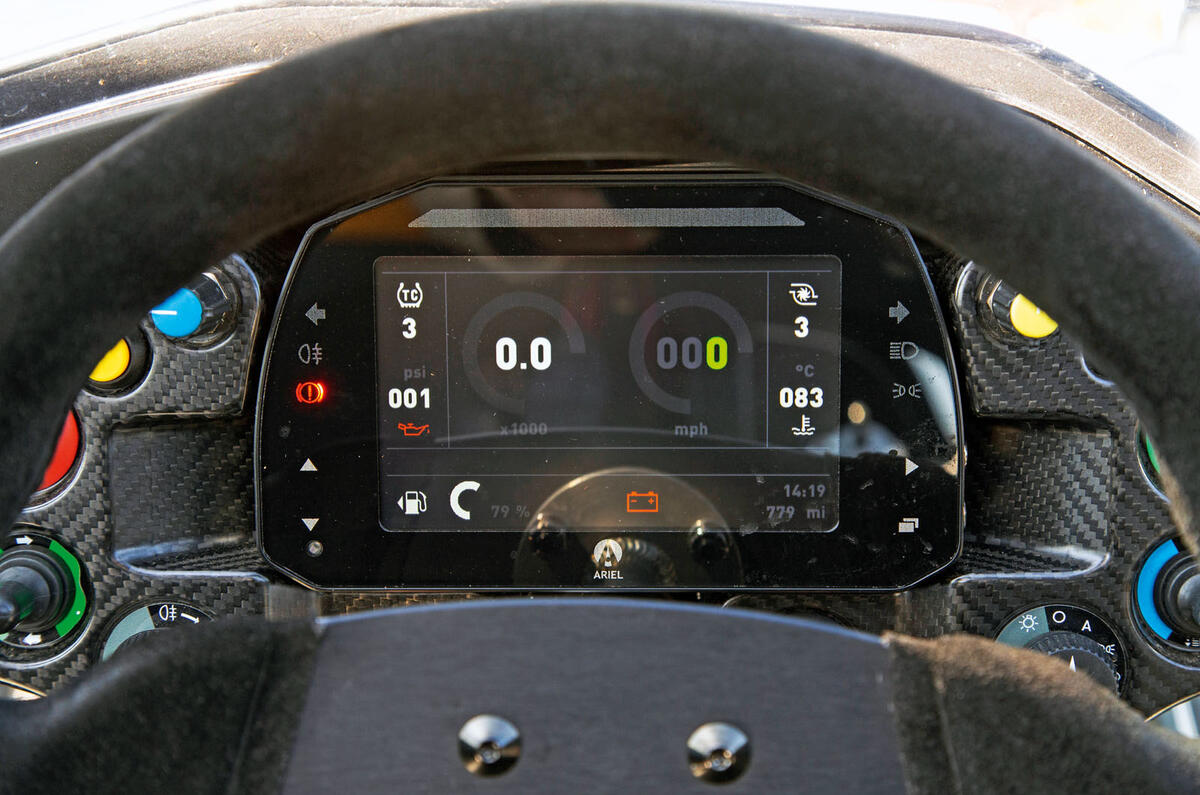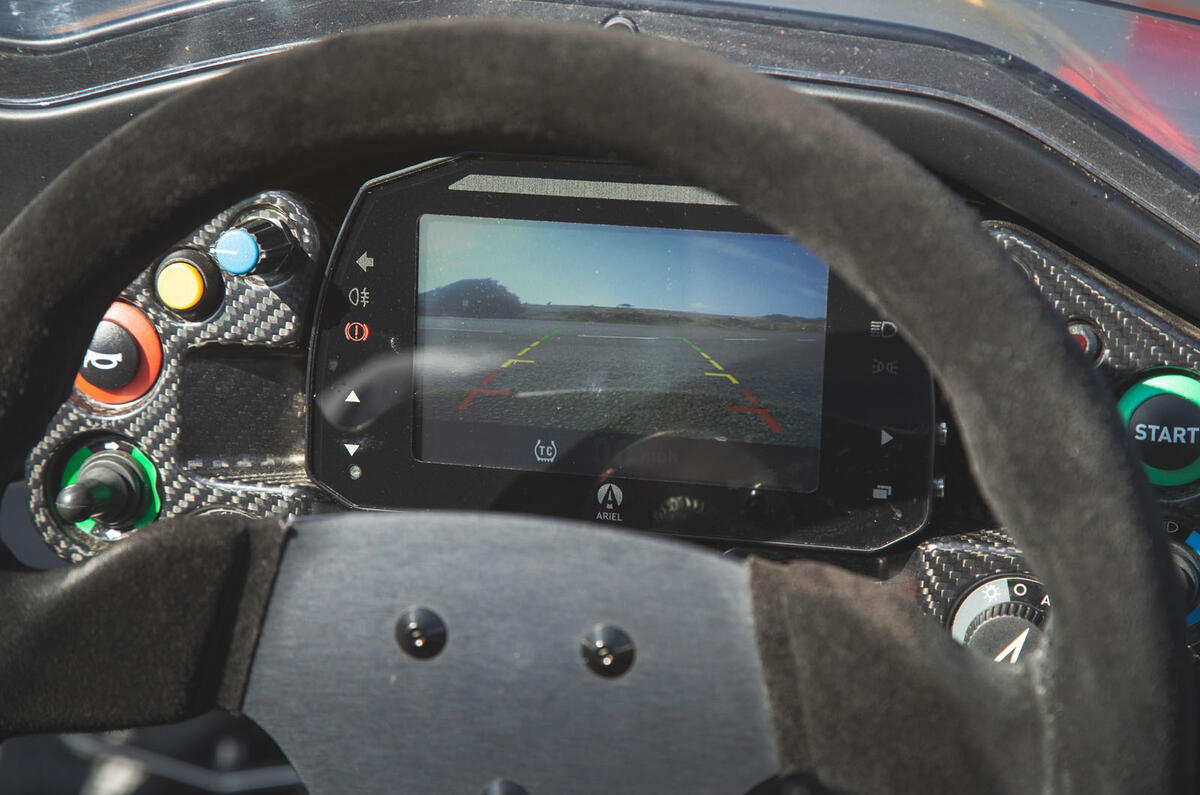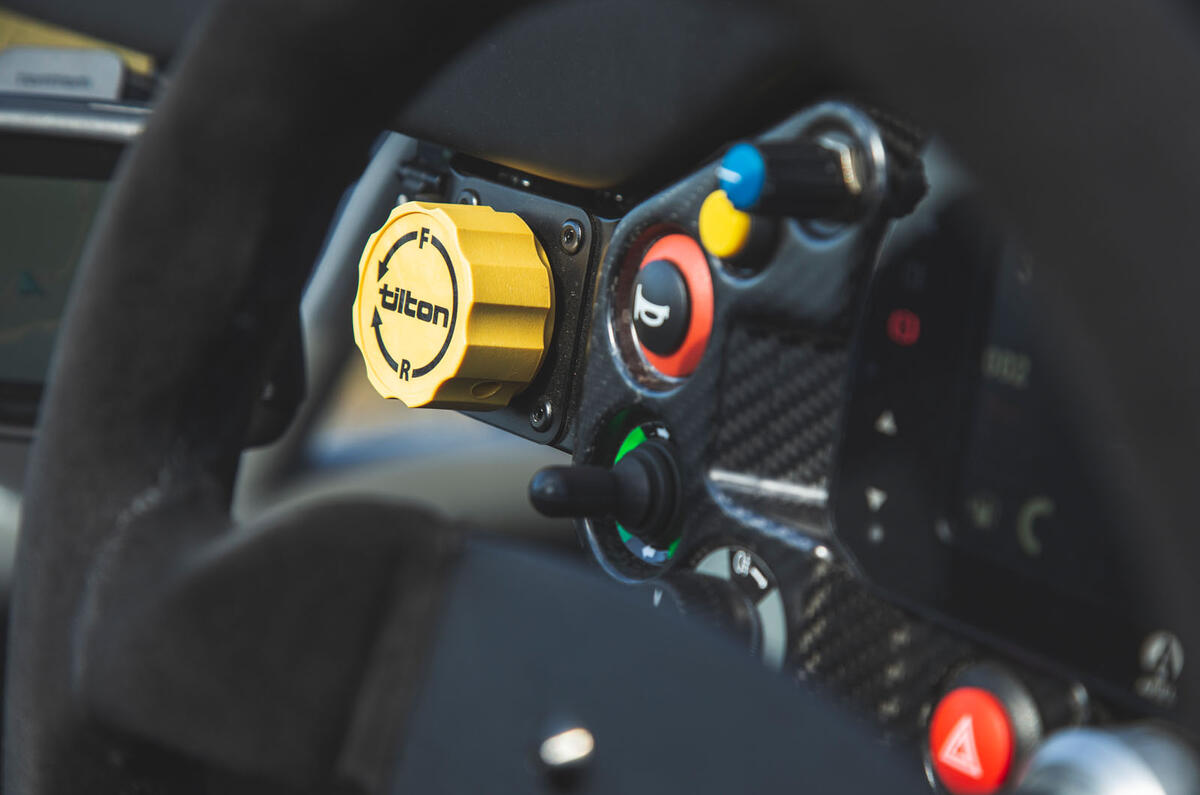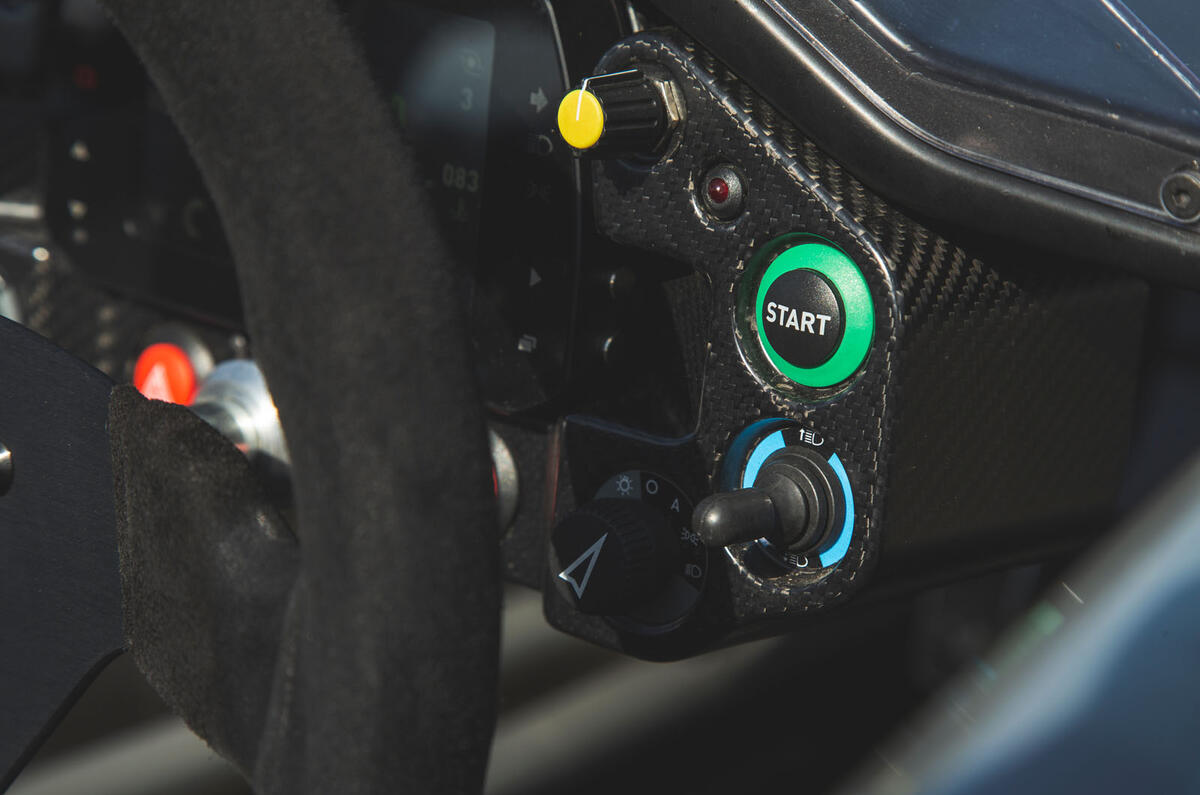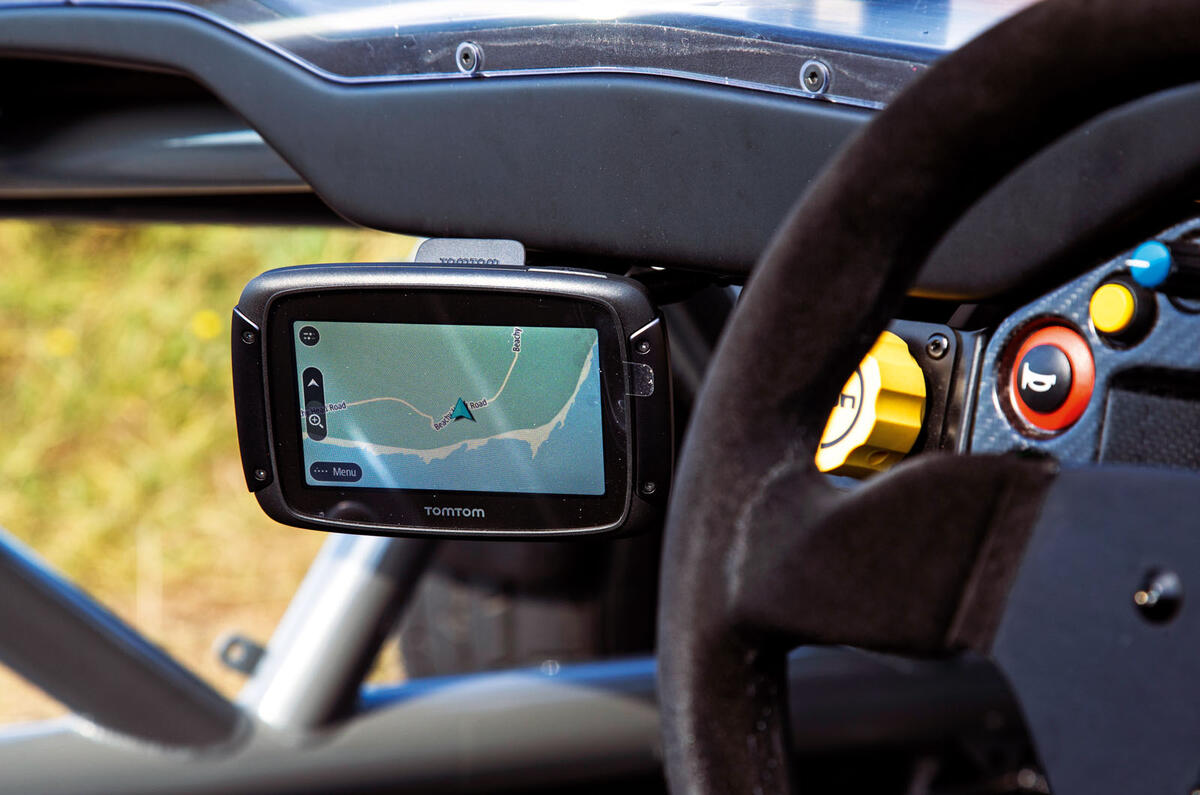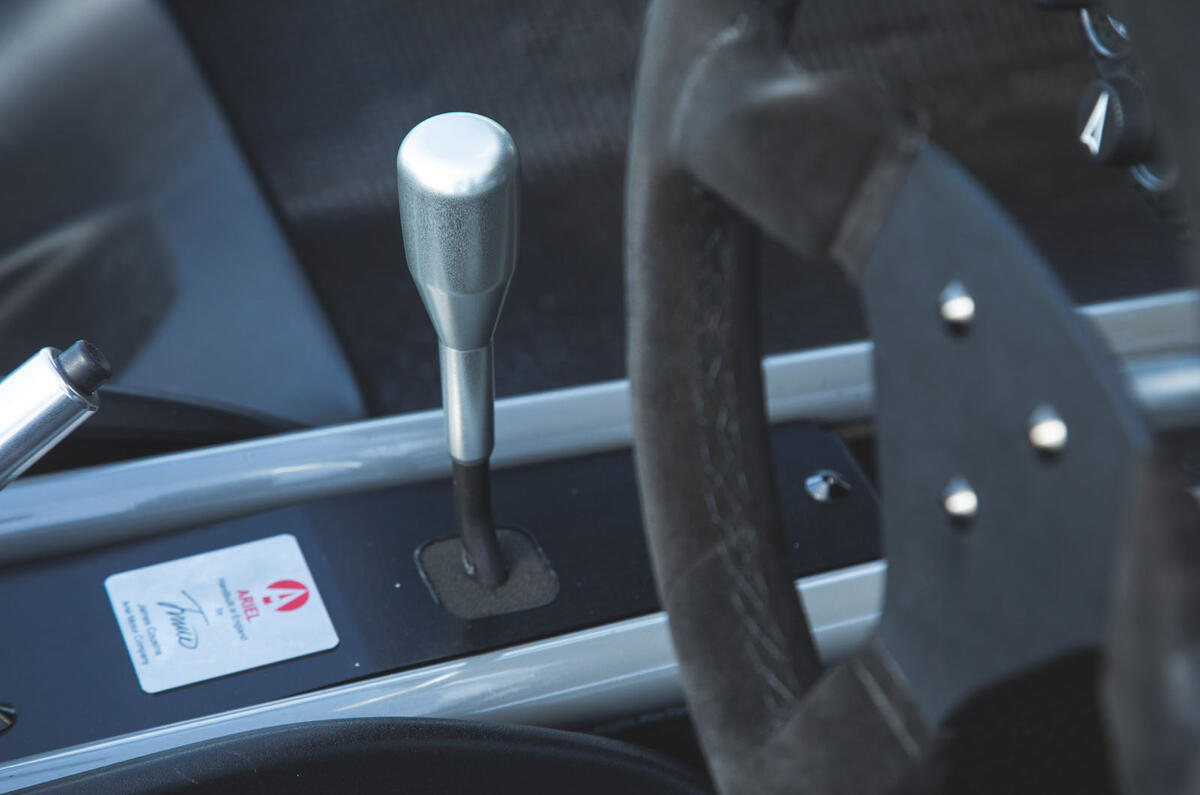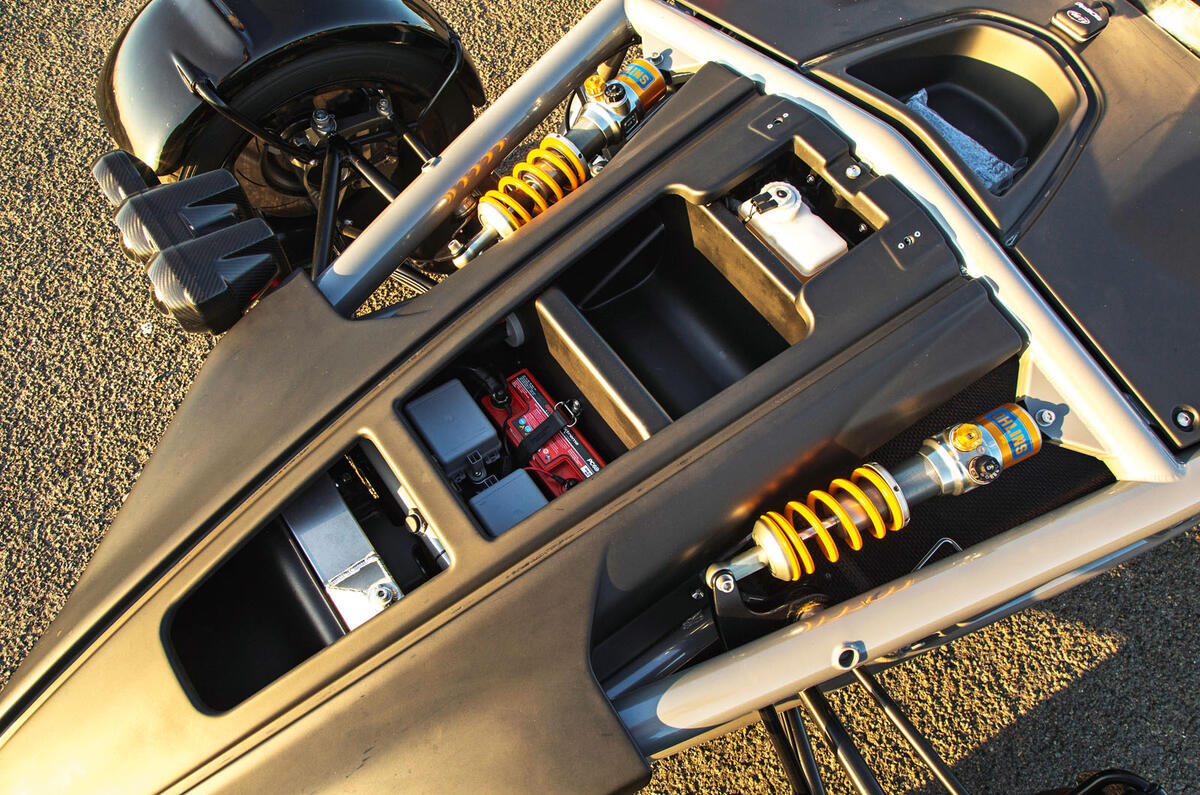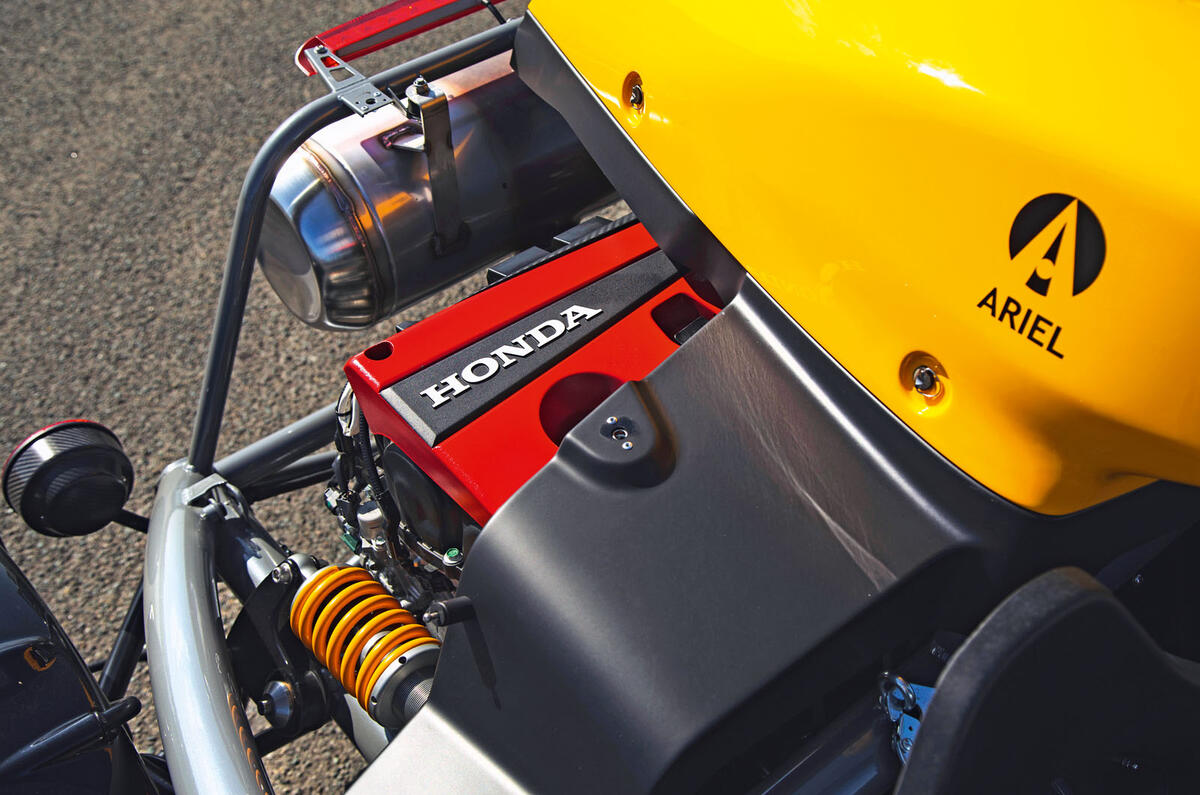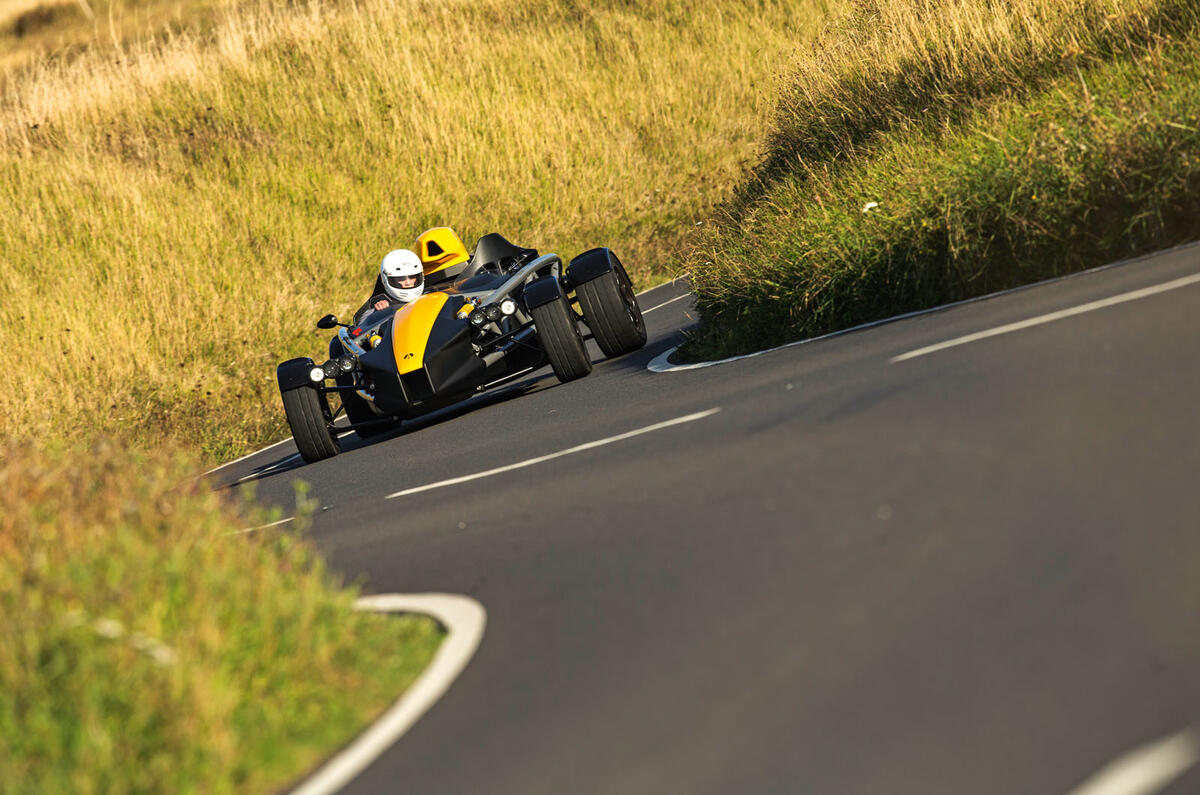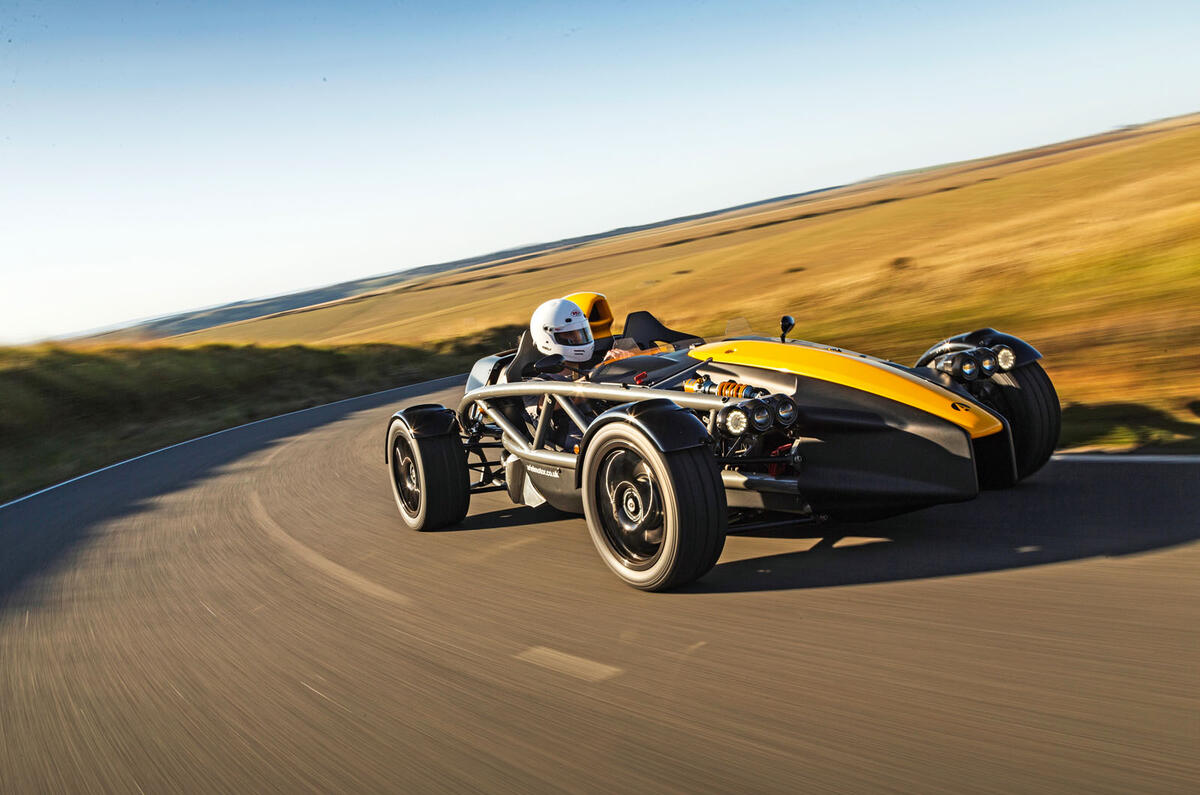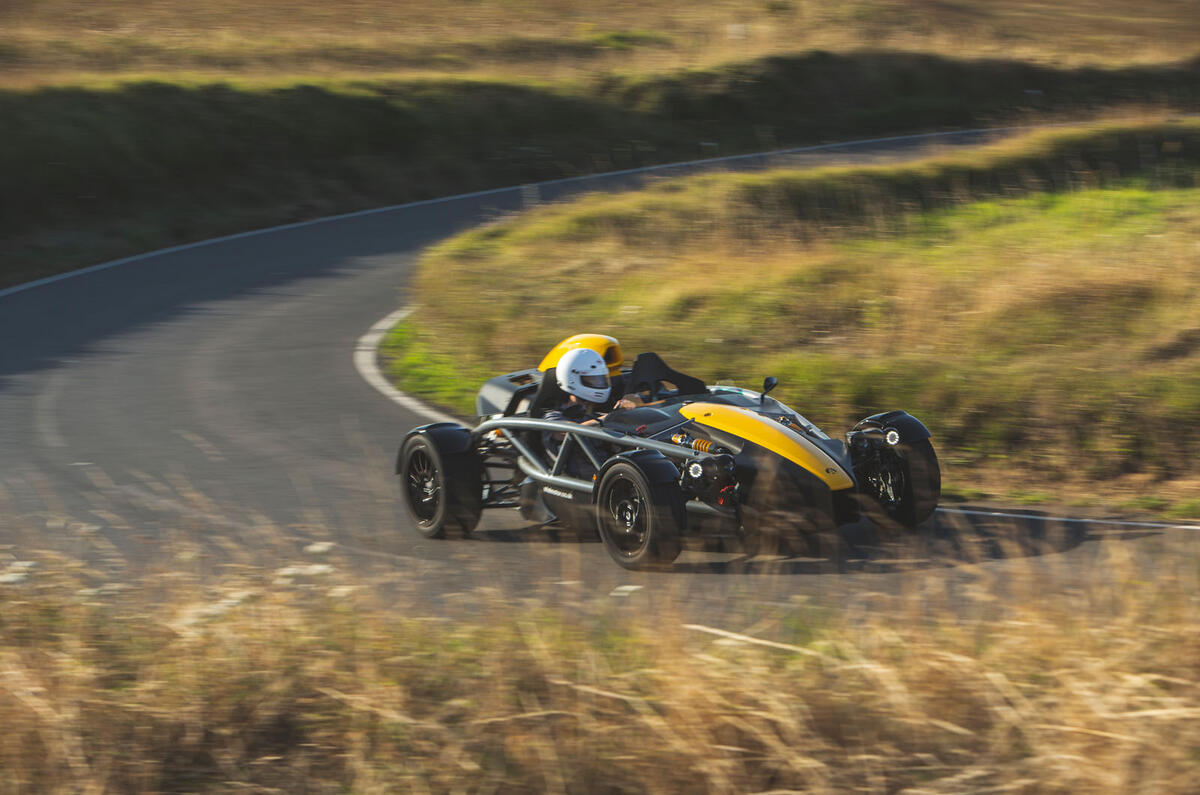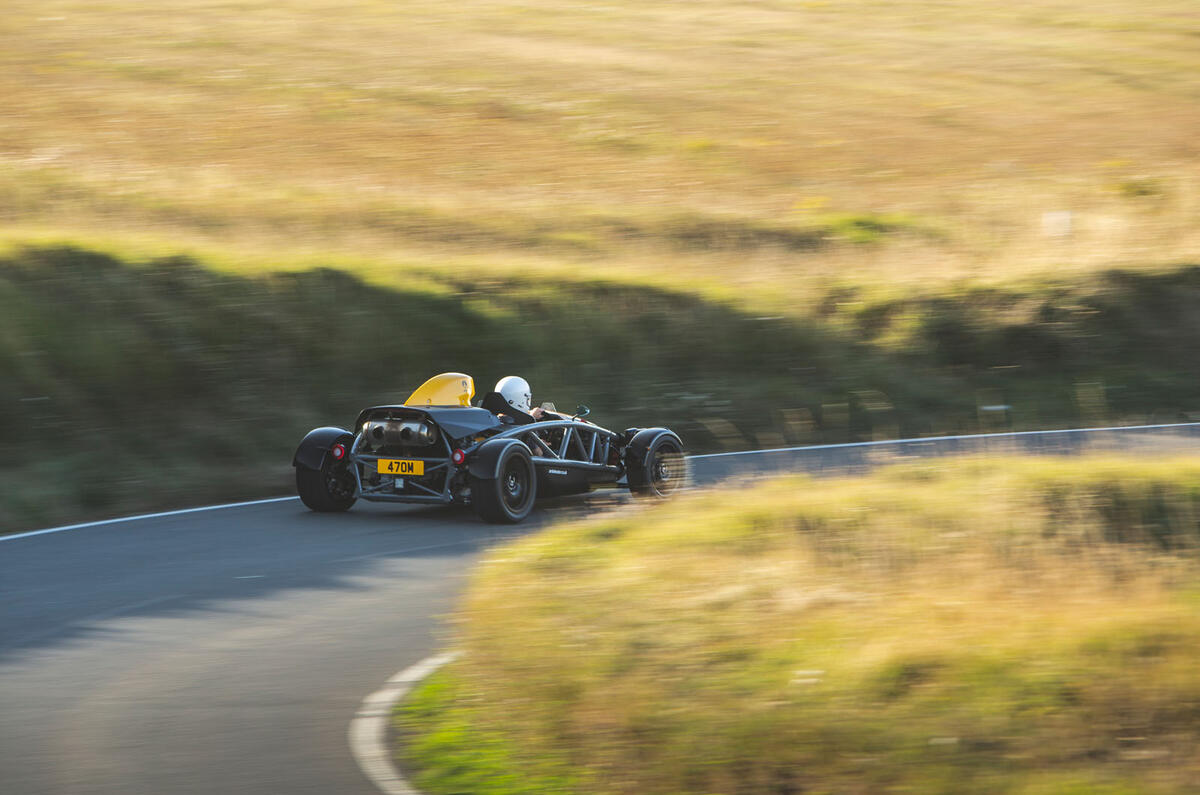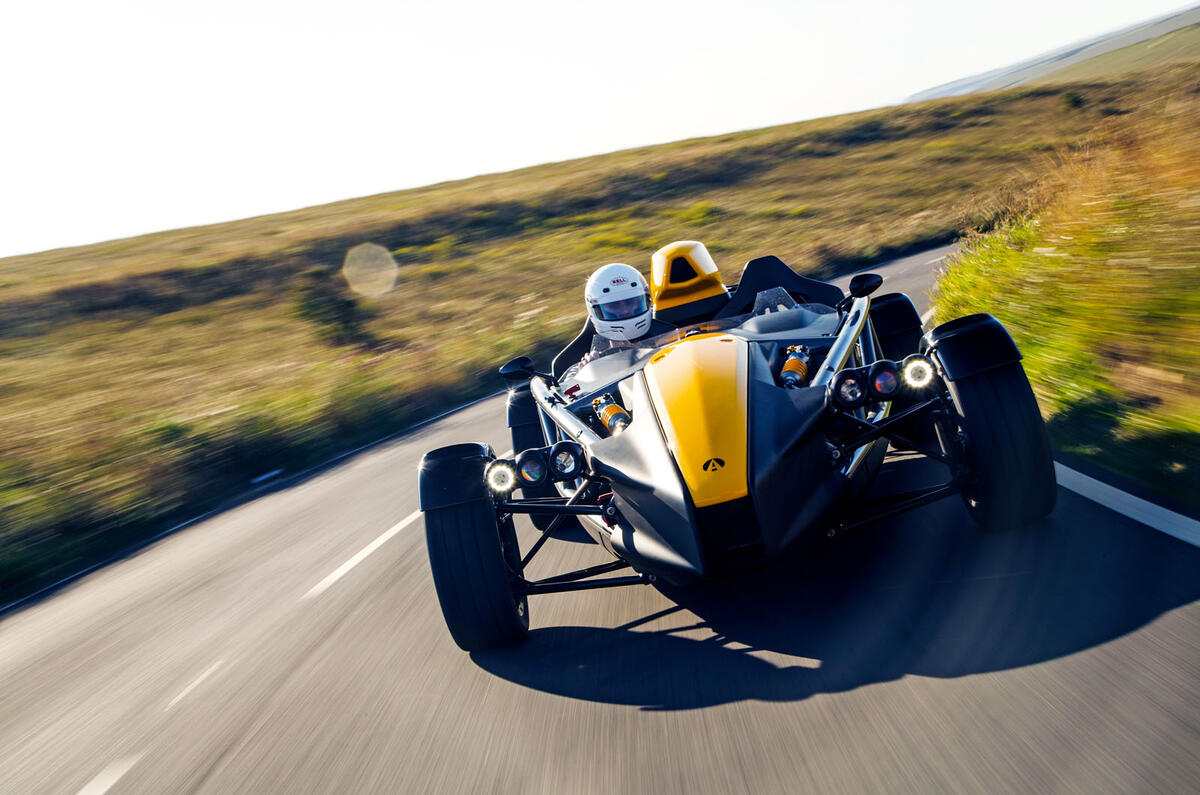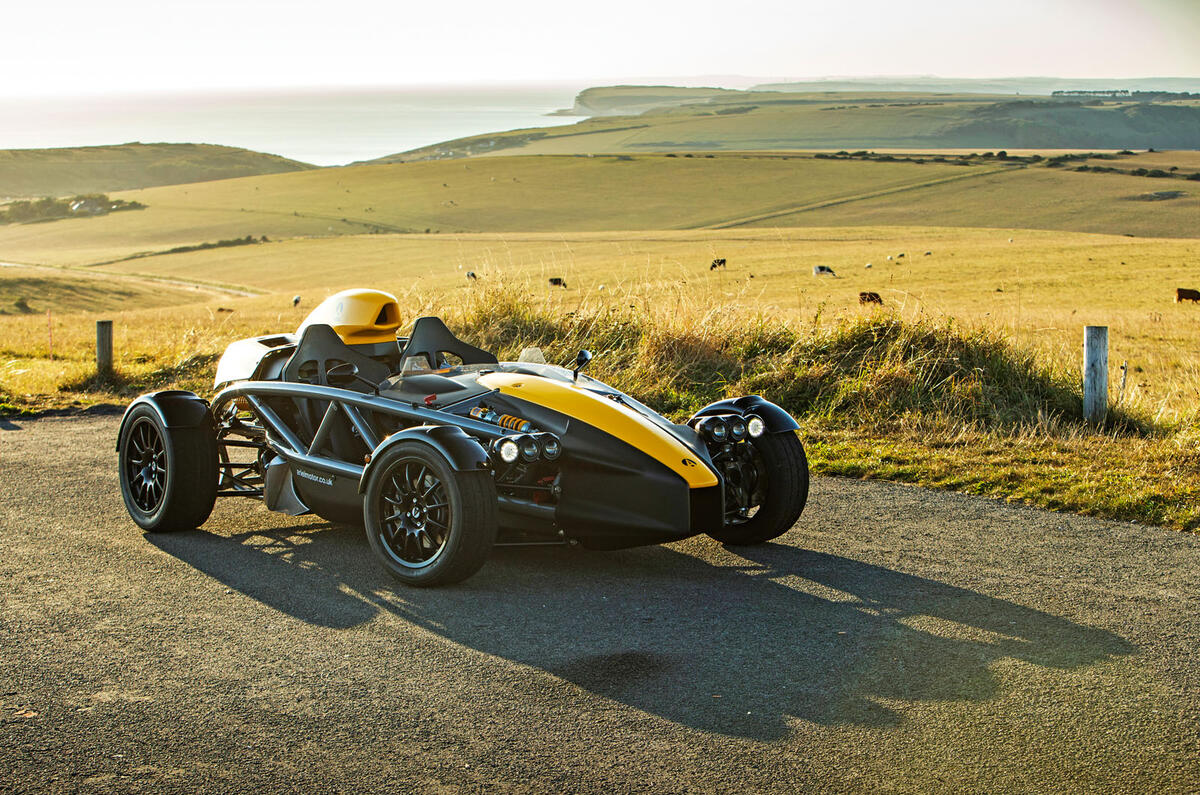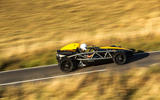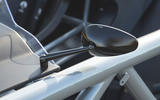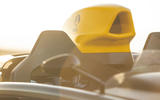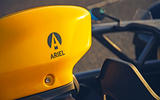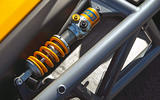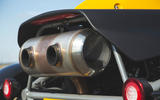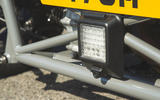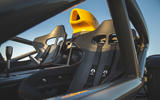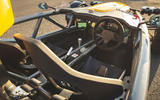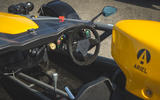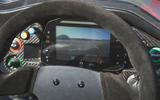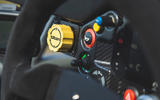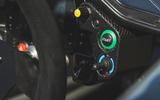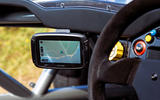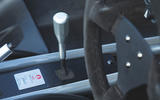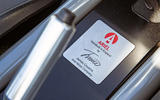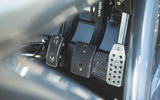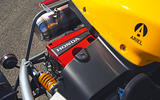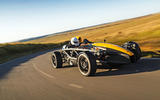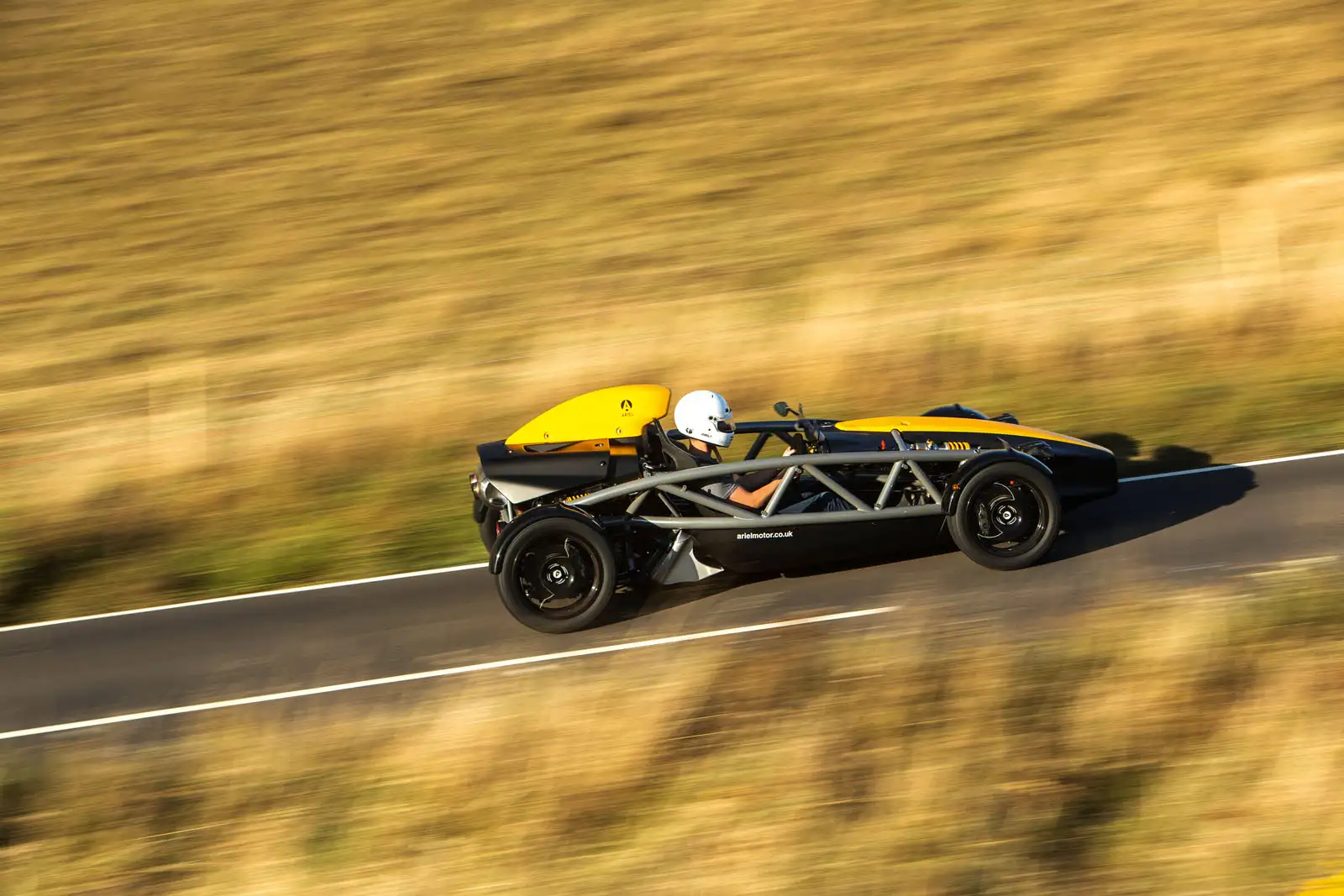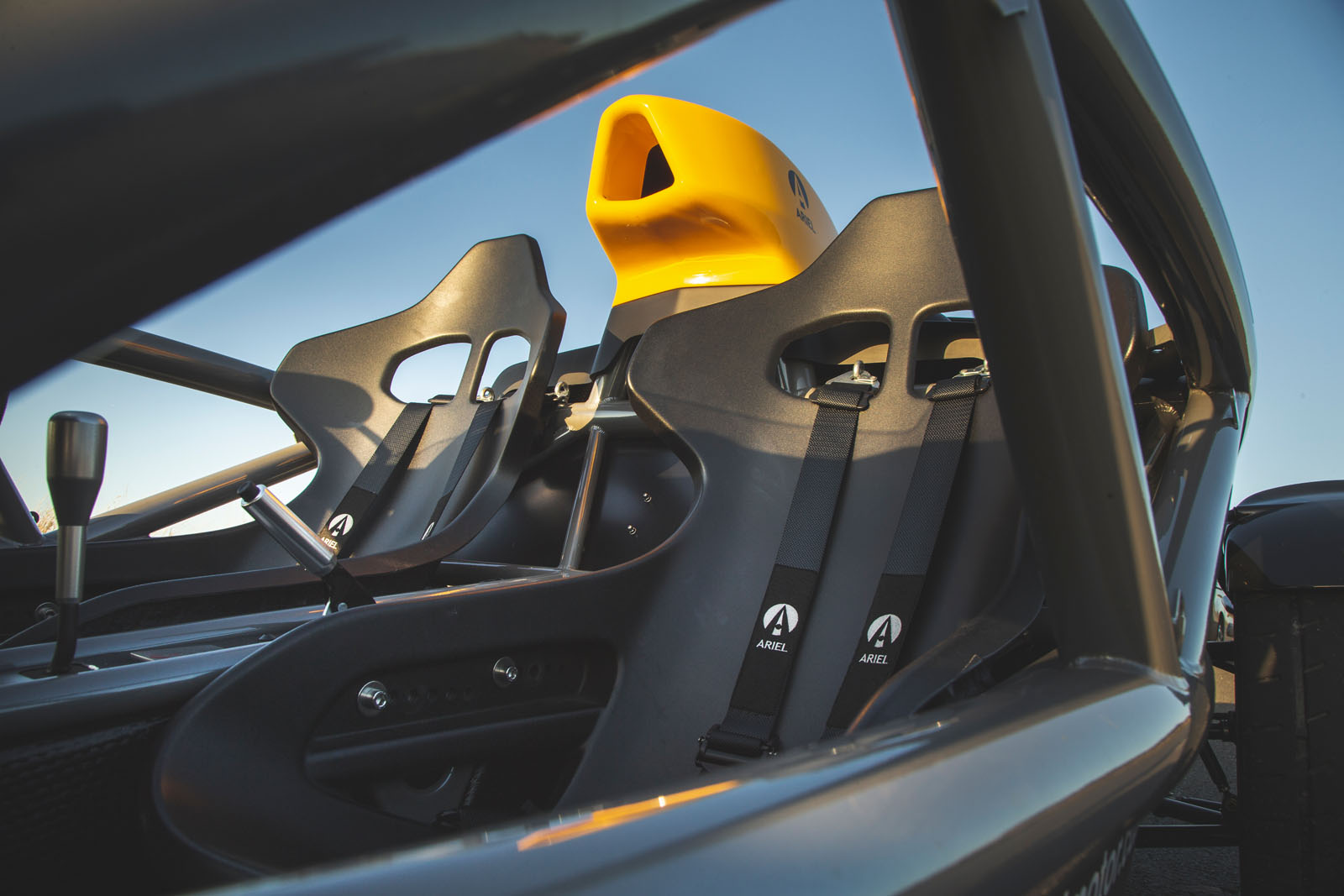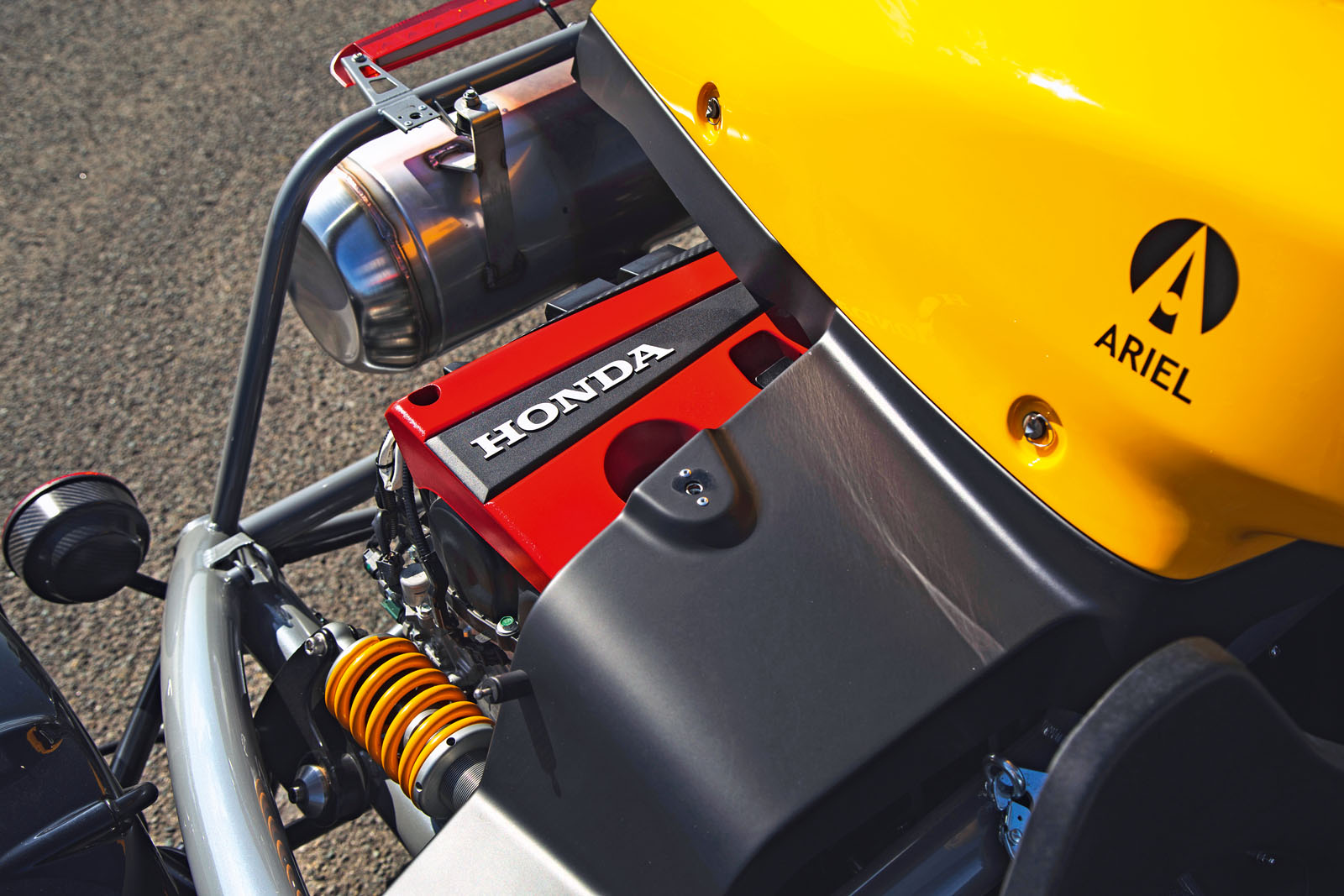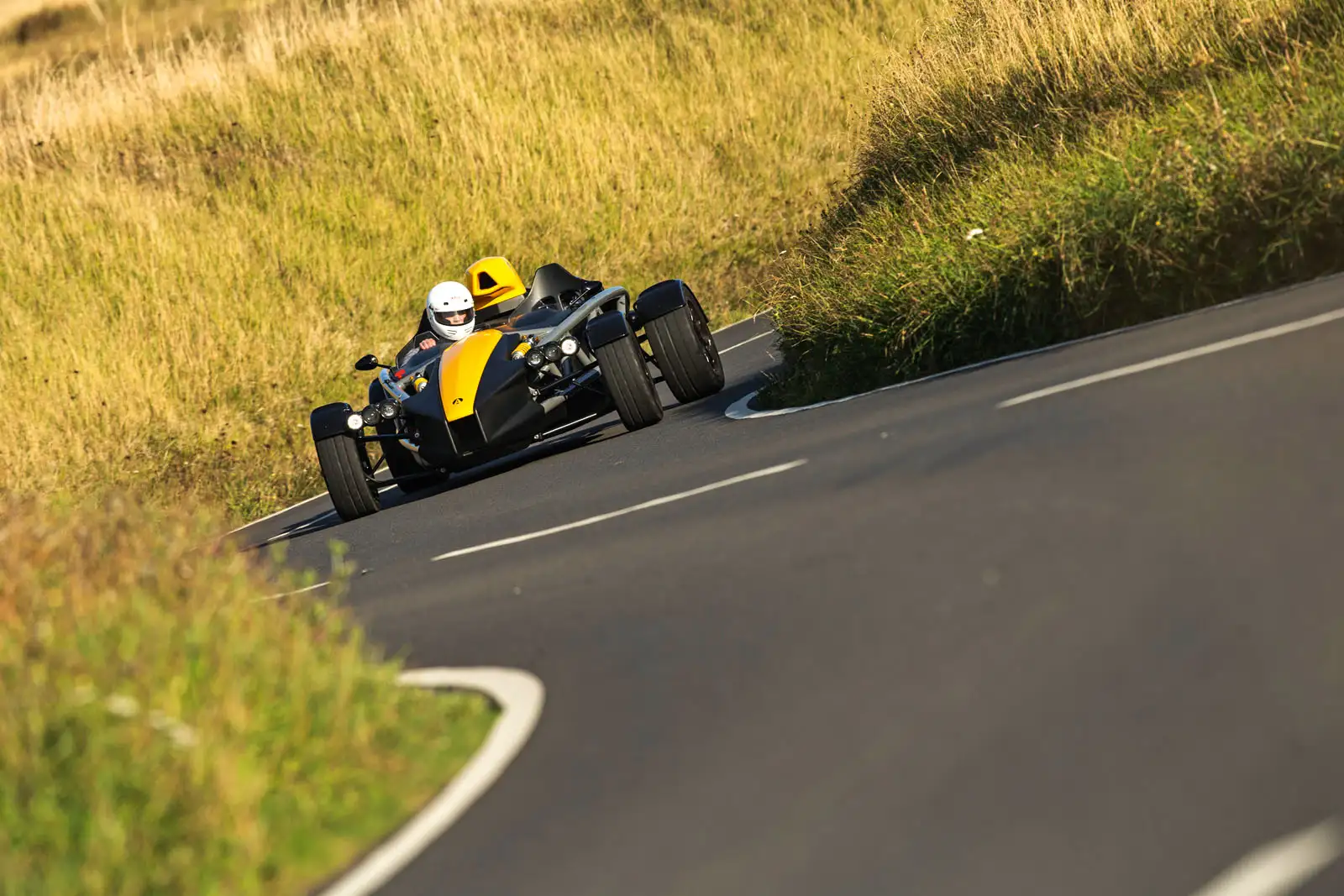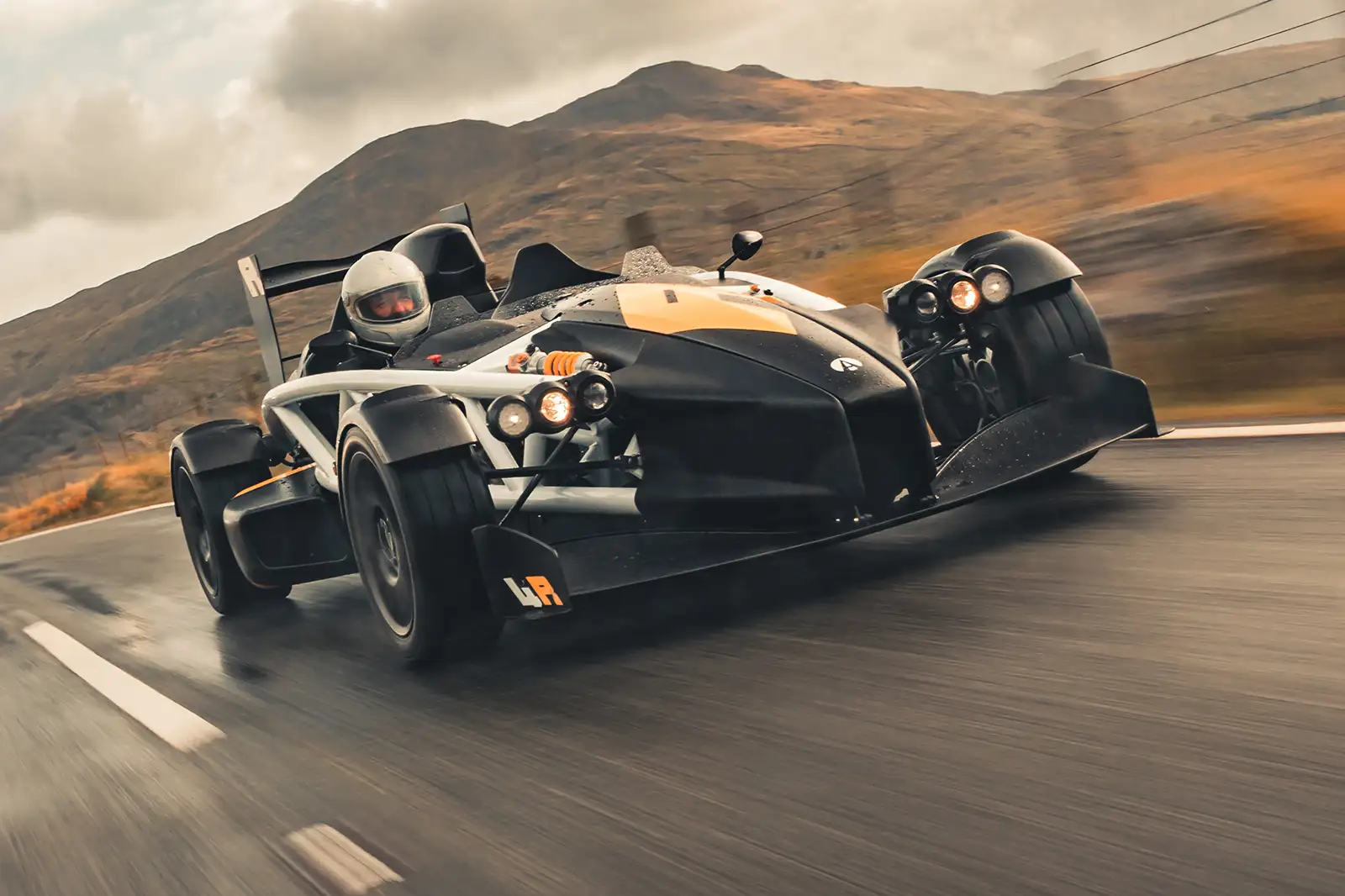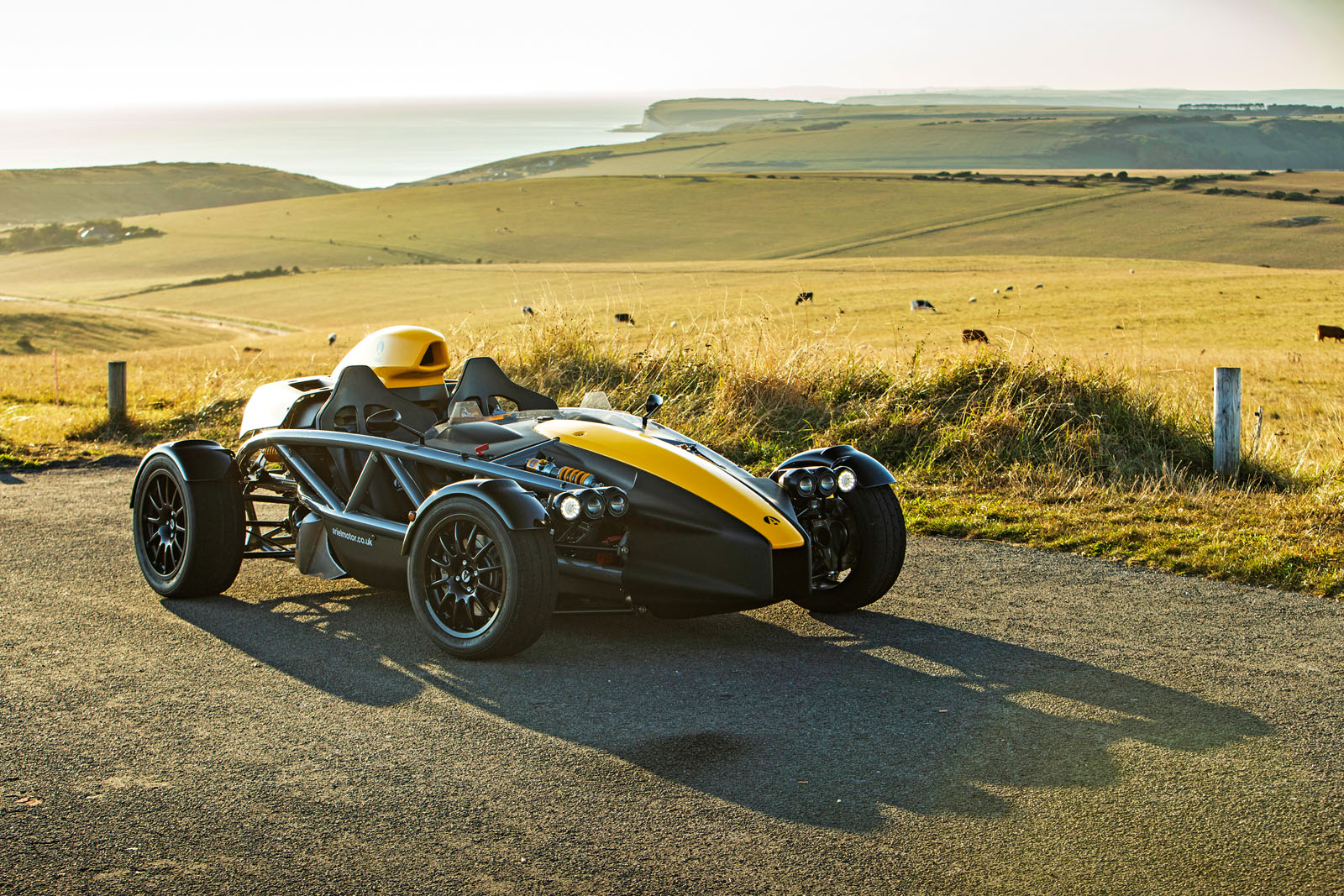In initial track testing, the adjustable Ohlins suspension of our Atom 4 test car was set fairly permissively for compression and rebound damping – by Ariel itself, we should add – but a little experimentation proves that, even if you crank up the dials, this remains a dynamically characterful car. It likes to move around on its suspension springs a little bit, and to master it you need to learn to manipulate its mass not unlike you might that of a sports bike or even an old Porsche 911.
That’s a process you can begin on the road, as you develop a sense of the Atom’s rearward weight bias and its surprisingly rangy gait over bumps, but it becomes really absorbing and wonderfully vivid on track, and one to savour for every delicious moment.
The firmer and more focused your Atom, the less of a character trait this becomes. A 4R, even on the road/track spring set-up rather than the full track springs, is more tightly controlled, with very limited roll and, while the steering still adds weight and feedback, you have to worry less about its body movements as it goes in and out of slides. It's a wonderfully balanced track car.
Even with those adjustable Ohlins dampers set to a more track-biased configuration, the Atom’s primary ride exudes a level of compliance that, at first, seems at odds with its hardcore ethos. It takes undulating surfaces in its stride with sophisticated suppleness, and successfully rounds off the edges from sharper, more sudden compressions without any great compromise to its otherwise excellent vertical body control.
Comfy-riding or otherwise, though, you wouldn’t call the Atom relaxing to drive even when touring and, because of its size and all-round vivaciousness, you remain very aware of any imperfection in the road surface that’s passing beneath the Atom’s open wheels, and ready to react to each. Thankfully, only at low speeds and over the worst lumps and bumps will you find that you really need to. Generally, the car tracks straight and doesn’t seem particularly highly strung by the standards of its peers.
Now much more physically draining than the car’s dynamic temperament is how exposed to the elements it leaves you. There’s no heater: your own warmth will depend solely on the weather and how well dressed you may or may not be for it. Some physical effort is required at motorway speed to keep your head steady in the wind, which quickens the onset of fatigue.
Then there’s the noise. At idle, our microphone returned a reading of 74dB, and shot to 92dB at a 70mph cruise – which is definitely earplugs-within-a-helmet sort of refinement.
The seats are comfortable at first, if a bit unforgiving over distance. Most of our testers agreed they did a good job of holding you in place, though the lack of lower back support proved a minor issue for some. In short, you probably wouldn’t want to spend more than an hour in an Atom without a break – and most owners won’t plan to. Imagine using it like a superbike and you won’t go far wrong.



